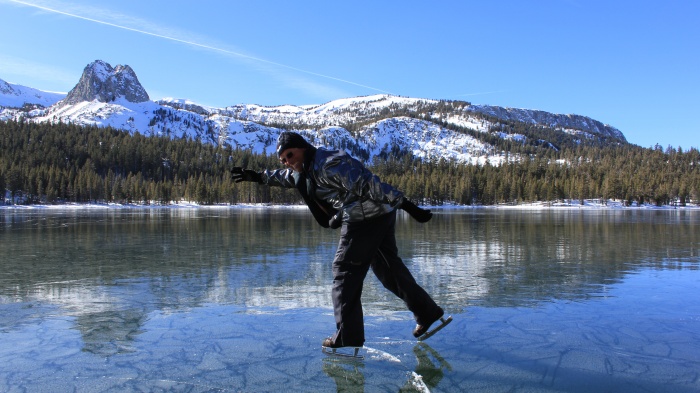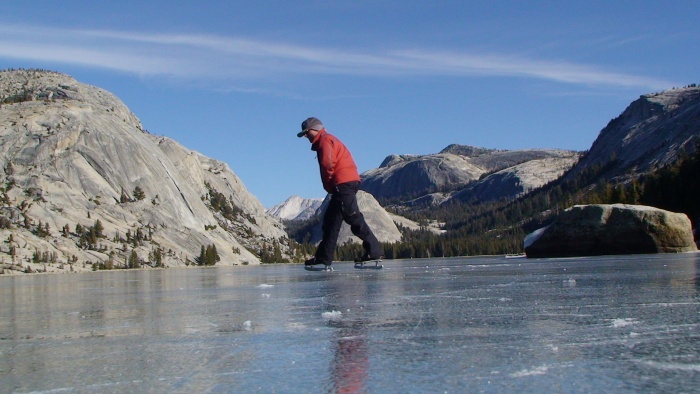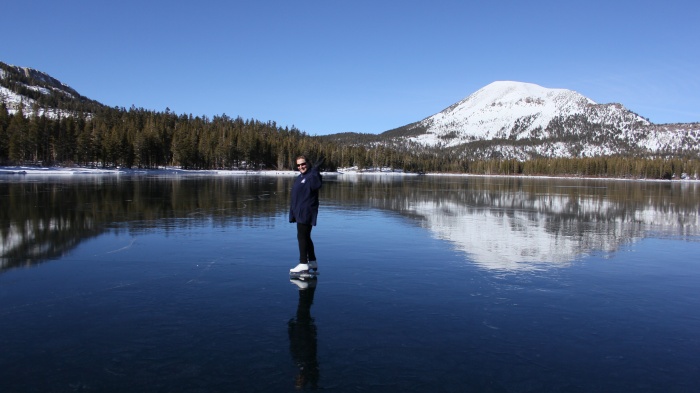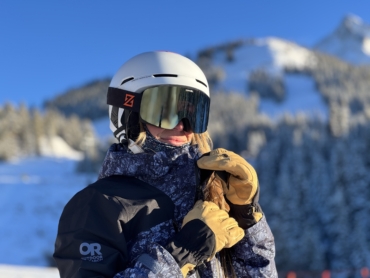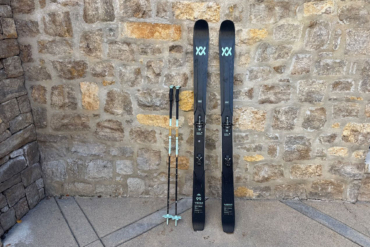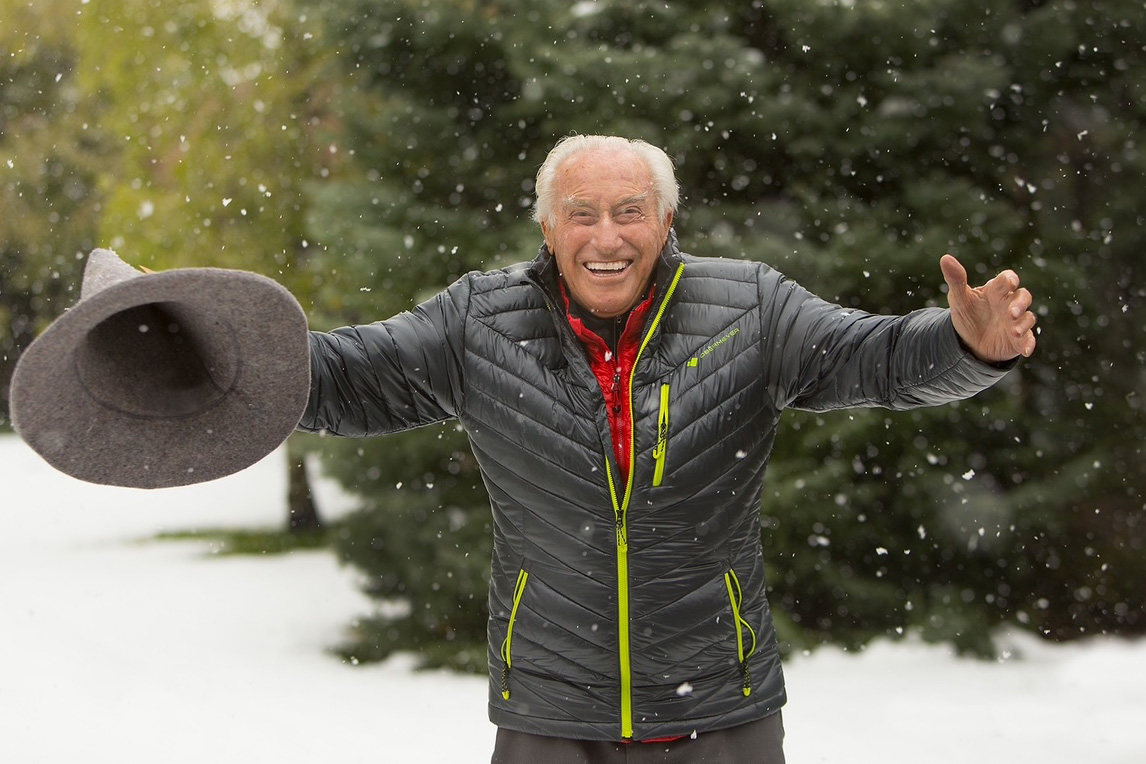What’s a die-hard skier to do when the peaks are bare and the temps remain bone chilling? Consider alpine ice skating, a great hobby for snow-free frozen lakes.
A thin piece of metal gliding across six inches of pristine black ice atop an alpine lake is otherworldly. After all, you’ve likely hiked several thousand vertical feet on terrain typically impassable without skis to get there.
As of late December, much of the western mountain ranges have remained dry with low snowpacks. What’s a skier to do?
One may contemplate heading south on a surf trip, but meanwhile true mountain lovers can accept the unique conditions and embrace a sport that exists only in a finite weather window like this. Enter alpine ice skating.
Weather Patterns: Perfect High-Country Ice Skating
North America’s current rare blend of weather phenomena and seasonality makes for optimal ice skating conditions.
“We are currently in a La Niña cycle in the Pacific with lower than average water temperatures in the central and south Pacific,” explains researcher Anthony Culpepper of the Mountain Studies Institute.
“This creates a pattern where precipitation is driven into the Northwest and northern Rockies, which means dry conditions for the Sierras, Southwest, and southern Rockies,” said Culpepper.
“When you pair these dry conditions with below-freezing temperatures at night and less daylight hours, it sets up the lakes perfectly for ice skating in the high country,” adds Dan McConnell, a weatherman for Mammoth Lakes, Calif.
Secret Skating: A Wrong Turn in Bishop
The sport of alpine ice skating is somewhat underground, with fanatics fervently guarding their stashes of backcountry ice. In fact, most folks don’t even know that this sport exists let alone how seriously these “gangs” of skaters take it.
While Dan relishes life in the mountains year round, there is an extra sparkle in his eyes and indelible smile when you bring up skating to him, and this is magnified when he hits the ice.
Last winter, on a particularly rare day of ice skating, McConnell and a group of friends (myself included) made a fortunate wrong turn in the Bishop backcountry leading to the over-11,000-foot Bishop pass and to the most ideal skating conditions anyone had ever witnessed.
We glided across six inches of black glass so clear the fish swimming beneath were visible. The sun peaked through the towering 13,000-foot Palisades like Agassiz and Cloud Ripper.
Only when a snowstorm blew across the pass, and proceeded to propel us across the lake in flurrying gusts up to 30 miles per hour, did the dream subside.
What You Need to Ice Skate
Despite the sport’s relative anonymity, the barriers to trying it are exceedingly low when compared to gear-intensive winter sports like skiing and ice climbing. A pair of used hockey skates at a thrift store will run you $5 to $30 – worth every penny when compared to spending another day griping about the forecast.
Former pro hockey player and coach Doug Lynch offers a few fit tips when purchasing a pair of skates: “First, ice skates fit smaller than your regular shoes. For example, if you wear a size 10 running shoe, you may be a size 8 in skates.”
The other main concern, even for novices, is comfort. “Skates typically come with a very basic insole, but when you add a hockey specific insoles like one from CCM it will step up your comfort level to a point where you can skate all day,” said Lynch.
As for the actual skating, Lynch urges beginners to bend their knees: “Skating requires a low center of gravity. Plus, if you do this and fall, it won’t hurt as much! Keep your head up, chest forward, and don’t forget to have fun!”
Deep Enough to Skate On
Unsure if it’s actually safe to entrust your life to a frozen body of water? As a rule, McConnell suggests using an ice screw or looking at cracks in the ice to make sure that any ice you step onto is at least 2 to 2.5 inches thick – but 3 is better. If open water is exposed or there is any doubt about the condition or quality of the ice, it is of course always better to err on the side of caution.
In the rare and serious event that you do fall in, it is important not to panic (yeah, good luck). Do your best to keep a portion of your body on the ice so that you literally freeze to it. This will keep your head above water with plenty of oxygen and make it much easier for someone to help pull you out.
Best Places to Alpine Ice Skate
Ready to lace up and glide? The following destinations are currently primed for you to hike up and experience their frozen wonder:
Mammoth Lakes, California
McConnell describes this high Sierra winter mecca as having three phases in the skating season: There are lakes at 10,500 feet and up, freezing first in places like the Little Lakes Valley and Bishop Pass. Then, the mid elevations like Lake Mary are primed. Finally, there is lower-elevation skating at the smaller ponds outside town, and even down in Bishop can be skate ready into January.
Silverton, Colorado
With high-elevation peaks towering in the 13,000- to 14,000-foot range, the San Juan Mountains can experience skate-ready ice on the alpine lakes in the fall. In fact, locals claim to have seen the lakes still frozen in summer.
The same principals in the Sierras apply to this zone, with ice conditions setting up in the lower elevations longer into the freeze. Unfortunately, even a light dusting of snow in the high country can jeopardize ice quality, as is pictured above at Ice and Island lakes, both nestled around 12,000 feet. But the uneven surface can create a technical experience for hardcore skaters.
For those looking for more mellow ice, the beaver ponds outside town and Andrews Lake are the way to go.
Wherever you live in the mountains, when Uller isn’t delivering the snow goods, consider checking out your local waters for potential skating. You just may find a favorite new winter sport!

